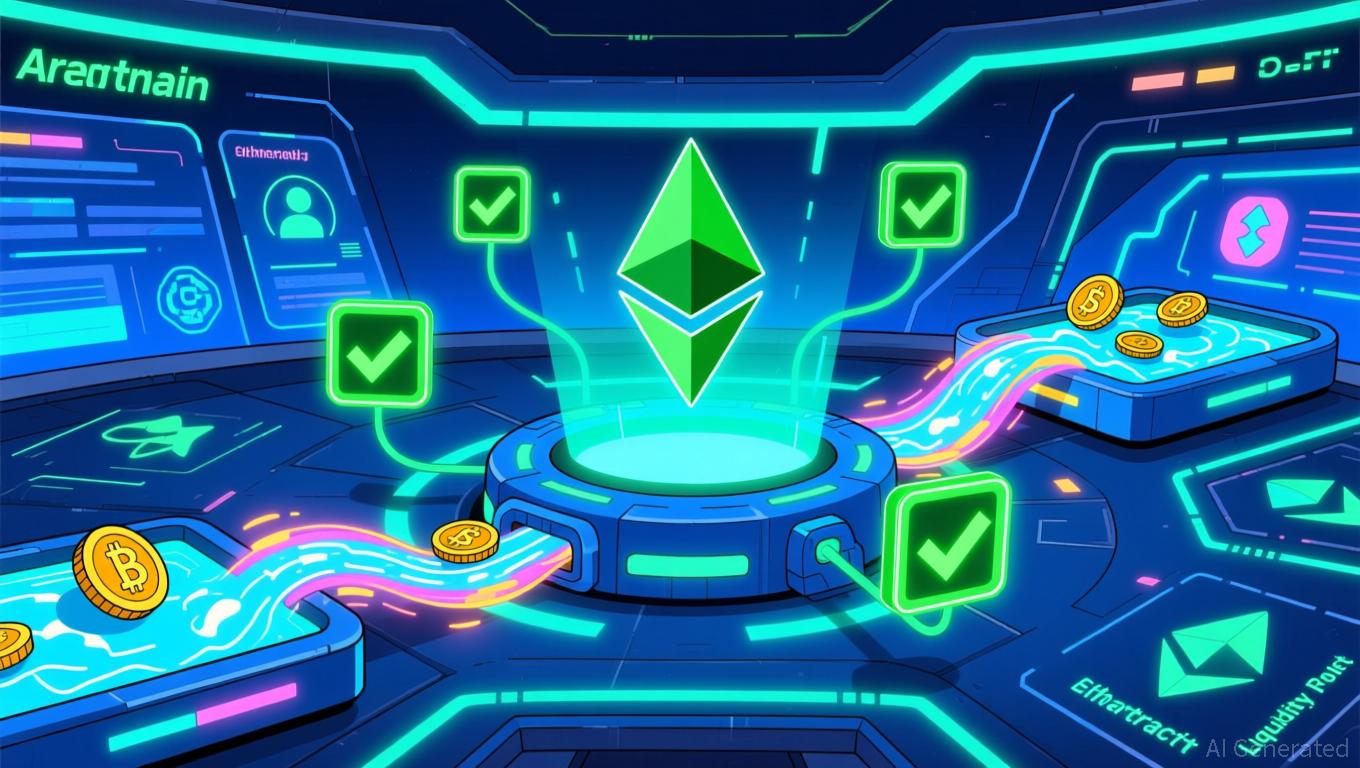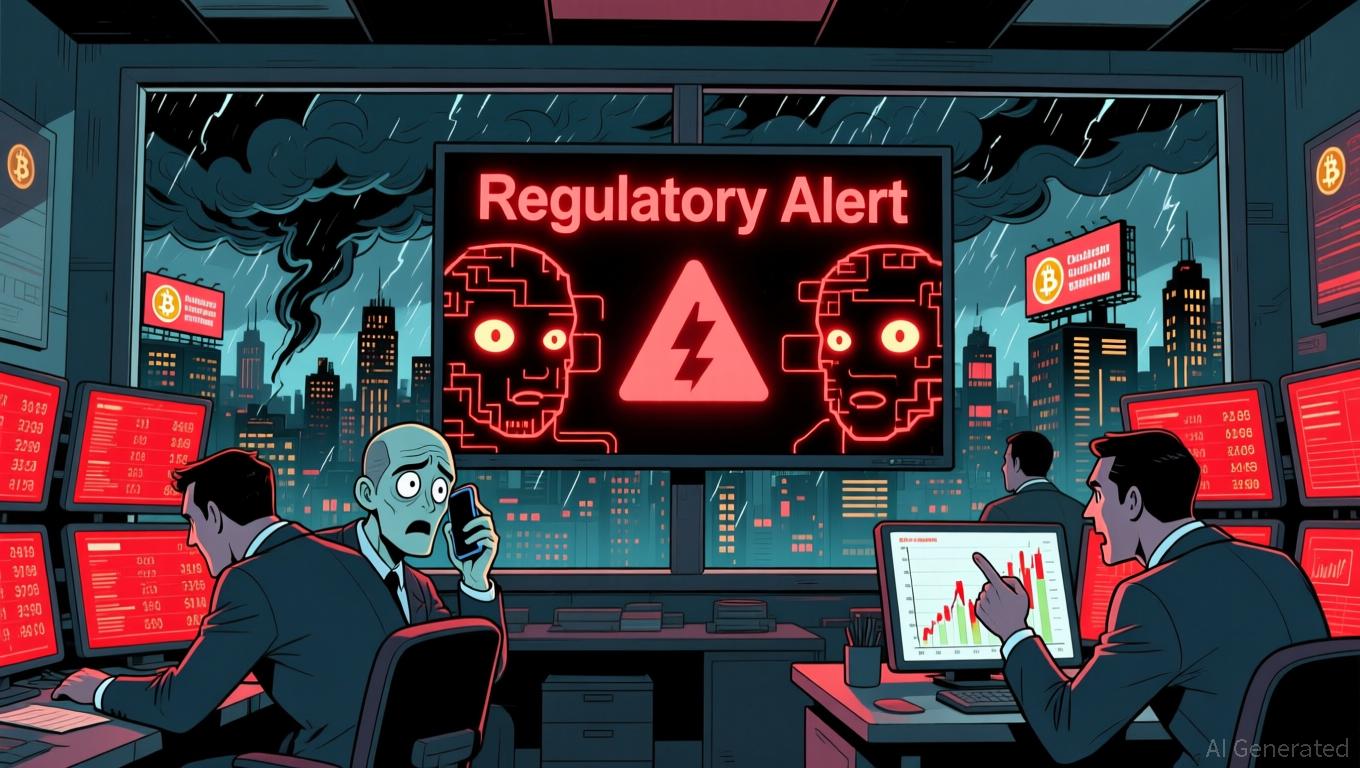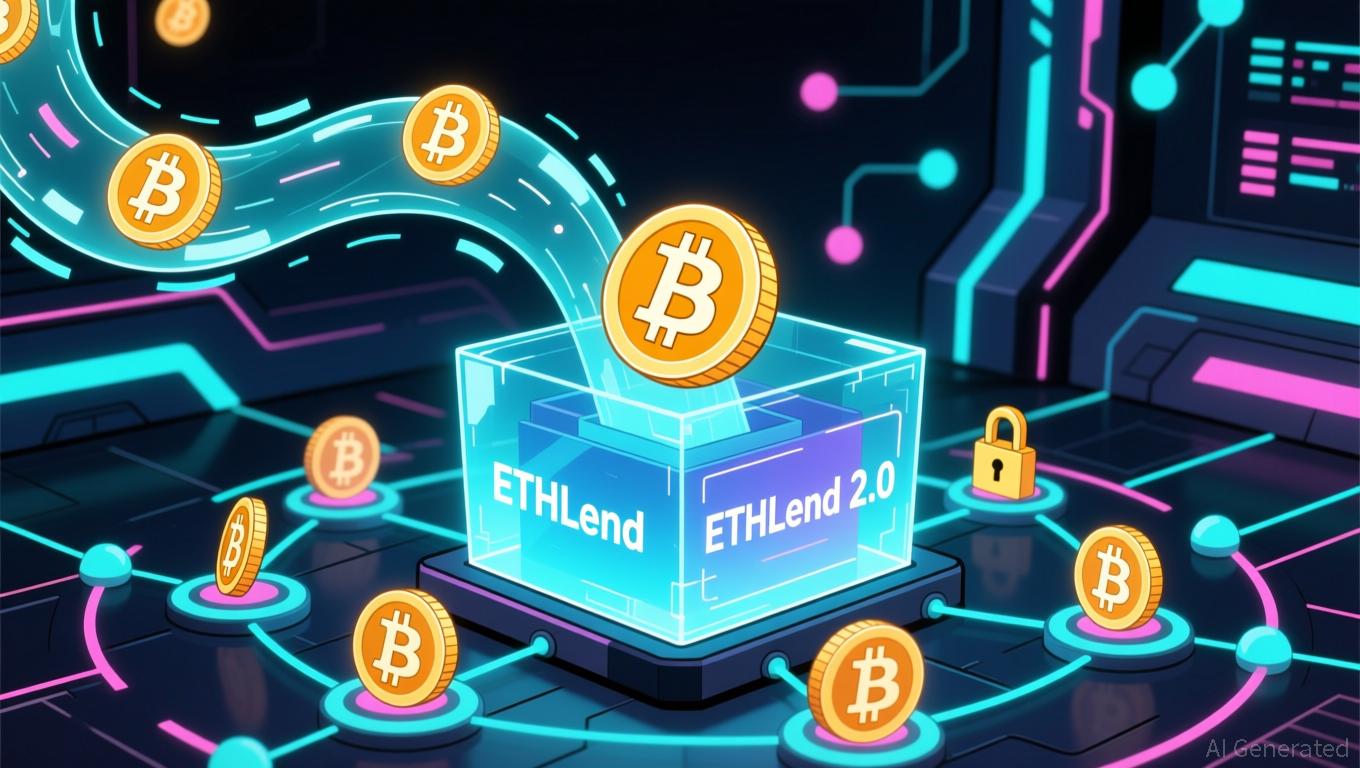Circle’s Blockchain “Refund Policy” Connects DeFi with Conventional Finance
- Circle introduces on-chain refund protocol for Arc blockchain to address stablecoin fraud and institutional compliance needs. - Protocol enables escrow-based dispute resolution for USDC payments via arbiters, balancing blockchain finality with traditional refund flexibility. - Arc's institutional focus is reinforced by Fireblocks partnership to integrate compliance-first USDC solutions for banks and custodians. - Regulatory alignment allows conditional fund freezes while maintaining blockchain principles

Circle has revealed its intention to launch an on-chain refund protocol on the Arc blockchain, targeting fraud prevention and compliance issues in stablecoin transactions, with a particular focus on institutional clients. The Refund Protocol, which will function on the Arc network, introduces partial reversibility for
Arc, which debuted in August 2025, is a Layer-1 blockchain built for enterprise use, specializing in stablecoin transactions, foreign exchange, and capital markets. The platform highlights instant USDC settlements, regulatory adherence, and privacy features that can obscure transaction amounts when needed. By focusing on institutional priorities, Arc is positioned as a solution for infrastructure providers and custodians, rather than individual users. This institutional emphasis is reinforced by Circle’s partnership with Fireblocks, announced in September 2025, to connect Arc with the Fireblocks Network and
The Refund Protocol offers a new perspective on blockchain transaction finality. Traditionally, blockchain transactions are permanent, a trait that has drawn both praise and criticism. Circle’s approach does not make transactions fully reversible, but allows for conditional refunds in cases of fraud or disputes. Payments are kept in escrow until a designated arbiter settles the matter, providing both transparency and security. A Circle representative noted that the protocol "strikes a balance between the finality of blockchain transactions and the flexibility required for dispute resolution" title2 [ 2 ]. This development tackles a major obstacle for institutional adoption, as it lets organizations combine blockchain speed with the dispute-handling processes of traditional finance title3 [ 3 ].
Compliance with regulations is a core aspect of the Refund Protocol. As global authorities increase oversight of stablecoin activities, institutions need systems that fit within legal boundaries. For example, U.S. laws are increasingly calling for the ability to freeze assets or comply with court directives. Circle’s protocol delivers this adaptability while upholding blockchain’s fundamental values, providing a blueprint for regulated stablecoin operations. Experts believe this model could become the benchmark for institutional stablecoin usage, helping to bridge decentralized finance and conventional banking title2 [ 2 ].
The impact on the financial industry could be profound. By enabling dispute resolution directly on-chain, Arc strengthens the case for using stablecoins in cross-border and institutional payments. The platform’s focus on privacy, efficiency, and compliance matches the requirements of banks and treasury departments, potentially transforming how financial institutions interact with digital currencies. As one industry analyst observed, "The blockchain industry is now addressing challenges it originally created, rediscovering the reasons behind traditional finance’s established practices" title2 [ 2 ]. This progression could encourage wider stablecoin adoption in mainstream finance, especially as regulatory certainty and institutional trust increase.
Circle’s initiative is part of a larger movement within crypto toward practical solutions for real-world problems. While some purists may see reversibility as straying from blockchain’s core philosophy, the protocol’s effectiveness will depend on its ability to satisfy institutional requirements. With early integrations already in progress and a strong focus on compliance, Arc’s Refund Protocol could become a foundational element for the next wave of digital financial infrastructure. As the stablecoin market continues to grow—USDC alone has surpassed $73 billion—Circle’s advancements may further establish stablecoins as a key part of the global financial ecosystem.
Disclaimer: The content of this article solely reflects the author's opinion and does not represent the platform in any capacity. This article is not intended to serve as a reference for making investment decisions.
You may also like
Why is MUTM's DeFi approach drawing in $18.9 million and 18,000 investors in 2025
- Mutuum Finance (MUTM) has raised $18.9M from 18,200 investors via a 250% presale price surge to $0.035 in Phase 6. - Its dual-lending model combines peer-to-contract and peer-to-peer mechanisms to optimize liquidity and capital efficiency. - Phase 6 nearing 99% completion highlights demand for MUTM's automated, intermediary-free lending via Ethereum-based smart contracts. - The project plans Q4 2025 launch of its public lending protocol on Sepolia testnet, emphasizing transparent decentralized ownership.

Global authorities suspend the growth of Biometric Blockchain due to worries about data privacy
- Worldcoin (WLD) fell 14% amid regulatory crackdowns, token unlocks, and market weakness, outperforming crypto's 9% decline. - Colombia, Philippines, and Thailand ordered operations halted and biometric data deleted over privacy concerns. - 37M WLD tokens ($25M) unlocked recently, worsening sell pressure as price consolidates near $0.63 resistance. - Analysts predict $0.75–$0.85 by 2025 if regulations clarify, but warn of potential drops to $0.26 amid unresolved compliance risks. - Project's viability hin

Bitcoin News Update: Aave's ETHLend 2.0 Disrupts DeFi's Dependence on Wrapped Tokens by Introducing Native Bitcoin
- Aave founder Stani Kulechov announced ETHLend 2.0's 2026 relaunch using native Bitcoin as collateral, diverging from wrapped tokens. - The hybrid P2P-liquidity pool model aims to enhance DeFi efficiency while reducing synthetic asset reliance through cross-chain BTC integration. - This revival aligns with growing institutional demand for non-wrapped BTC and could restore utility for the legacy LEND token. - Despite bearish market conditions, the move signals confidence in Bitcoin's foundational role for

The Rapid Rise of ZK Technology and What It Means for Cryptocurrency Markets
- ZK proof ecosystems saw 2025 breakthroughs in scalability, institutional adoption, and on-chain activity, reshaping blockchain infrastructure and crypto markets. - Projects like zkSync Era (27M+ monthly txns) and StarkNet (tripled TVL) demonstrated ZK-rollups' capacity to handle 15,000+ TPS, accelerating Ethereum's Layer 2 dominance. - Institutional giants including Deutsche Bank , Sony , and Nike integrated ZKP solutions for compliance, with Polygon securing $1B+ in ZKP development funding. - ZKP market